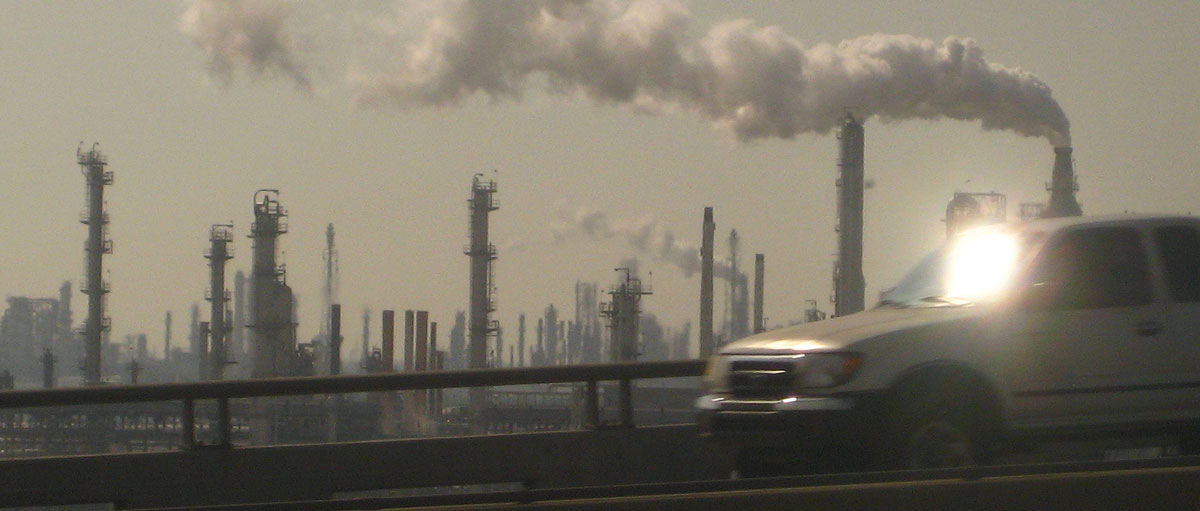
A “carbon law” approach, say an international team of scientists, ensures that the greatest efforts to reduce emissions happens sooner not later and reduces the risk of blowing the remaining global carbon budget to stay below 2°C. Photo: M. Riviera/Flickr CC BY-NC 2.0
Centre director Johan Rockström introduces the "Carbon Law" and explains how humanity can meet the UN’s Paris Agreement’s climate goal of limiting the global temperature rise to "well below 2°C" from preindustrial times.
climate policy
Curbing emissions with a new "carbon law"
New carbon roadmap offers pathway to halve emissions every decade, say researchers
- A “carbon law", which is based on published energy scenarios, would give the world a 75% chance of keeping Earth below the 2°C Paris Agreement target
- Fossil-fuel emissions should peak by 2020 at the latest and fall to around zero by 2050
- The “carbon law”, is based on Moore’s Law in the computer industry, which states that computer processors double in power about every two years. This rule of thumb has held for 50 years and still drives disruptive innovation
An international team of researchers led by centre director Johan Rockström propose a solution for the global economy to rapidly reduce carbon emissions. The authors argue a carbon roadmap, driven by a simple rule of thumb or “carbon law” of halving emissions every decade, could catalyse disruptive innovation. The solution was recently published in the journal Science.
Request publication
Such a “carbon law”, based on Moore’s Law in the computer industry, applies to cities, nations and industrial sectors.
The authors say fossil-fuel emissions should peak by 2020 at the latest and fall to around zero by 2050 to meet the UN’s Paris Agreement’s climate goal of limiting the global temperature rise to "well below 2°C" from preindustrial times.
Ambitious roll-out of renewables
A “carbon law” approach, they say, ensures that the greatest efforts to reduce emissions happens sooner not later and reduces the risk of blowing the remaining global carbon budget to stay below 2°C.
The researchers say halving emissions every decade should be complemented by equally ambitious, exponential roll-out of renewables. For example, doubling renewables in the energy sector every 5-7 years, ramping up technologies to remove carbon from the atmosphere, and rapidly reducing emissions from agriculture and deforestation.
We are already at the start of this trajectory. In the last decade, the share of renewables in the energy sector has doubled every 5.5 years. If doubling continues at this pace fossil fuels will exit the energy sector well before 2050
Johan Rockström, lead author
Inspired by Moore's Law
The authors pinpoint the end of coal in 2030-2035 and oil between 2040-2045 according to their "carbon law". They propose that to remain on this trajectory all sectors of the economy need decadal carbon roadmaps that follow this rule of thumb, modeled on Moore’s Law.
Moore’s Law states that computer processors double in power about every two years. While it is neither a natural nor legal law, this simple rule of thumb or heuristic has been described as a “golden rule” which has held for 50 years and still drives disruptive innovation.
The paper notes that a “carbon law” offers a flexible way to think about reducing carbon emissions. It can be applied across borders and economic sectors, as well as both regional and global scales.

Meeting the Paris Agreement goals will require bending the global curve of CO2 emissions by 2020 and reaching net-zero emissions by 2050. It furthermore depends on rising anthropogenic carbon sinks, from bioenergy carboncapture and storage (BECCS) engineering (yellow) and land use (orange), as well as sustained natural sinks. Illustration: Rockström, et. al. in Science, 2017, Vol-. 355, Issue 6331. Click on illustration to access article
Full decarbonization by 2050
Hans Joachim Schellnhuber, director of the Potsdam Institute for Climate Impact Research, says, "Our civilization needs to reach a socio-economic tipping point soon, and this roadmap shows just how this can happen. In particular, we identify concrete steps towards full decarbonization by 2050. Businesses who try to avoid those steps and keep on tiptoeing will miss the next industrial revolution and thereby their best opportunity for a profitable future."
Co-author Nebojsa Nakicenovic, deputy director general of the International Institute for Applied Systems Analysis (IIASA) and member of the Earth League, said “Humanity must embark on a decisive transformation towards complete decarbonization. The ‘Carbon law’ is a powerful strategy and roadmap for ramping down emissions to zero so as to stay within the global carbon budget for stabilizing climate to less than 2°C above preindustrial levels."
Joeri Rogelj, also at IIASA, said, “The carbon law outlines a global path towards achieving climate and sustainability goals in broad yet quantitative terms. It sketches a general vision of rapid emission reductions in conjunction with the development of sustainable carbon dioxide removal options. It clearly communicates that no single solution will do the job, and that this deep uncertainty thus implies starting today pursuing multiple options simultaneously.”
Malte Meinshausen, director of the Climate & Energy College at the University of Melbourne, said “Regions that make way for future-proof renewable energy and storage investments will turn a zero-emissions future into an economic opportunity. While for years, we’ve seen the ramp-down of incumbent fossil technologies only as burden, the other side of the coin is now finally visible: lower costs, more jobs and cleaner air.”
Following a “carbon law”, which is based on published energy scenarios, would give the world a 75% chance of keeping Earth below 2°C above pre-industrial temperatures, the target agreed by nations in Paris in 2015.
From World Economic Forum 2017, watch Johan Rockström explaining why we should be concerned about tipping points and how we can embrace the challenge of seeing opportunities in the necessary transformation towards global sustainability:
Rockström, J., Gaffney, O., Rogelj, J. et. al. 2017. A roadmap for rapid decarbonization. Science, Volume 355 Issue 6331
Johan Rockström is the director of the Stockholm Resilience Centre and a professor of environmental science at Stockholm University. He is an internationally recognized scientist for his work on global sustainability issues.

Owen Gaffney is director of international media and strategy at the Stockholm Resilience Centre. His work focuses on understanding, communicating and visualizing humanity's impact on the planet through concepts such as the Anthropocene and planetary boundaries, and transformation processes.









